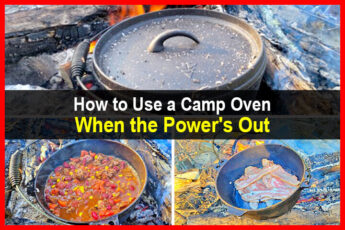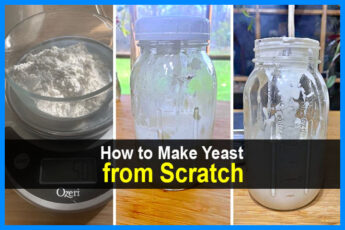Estimated reading time: 16 minutes
The modern kitchen is filled with small electrical appliances, some of which can best be described as being invented for people with more money than sense. We are constantly assailed by advertisements, tempting us to buy the latest gadget for our kitchen. While most of those gadgets are actually useful, they will be nothing more than so many paperweights when the power goes out.
Both the bad news and the good news are that people were able to cook pretty much everything that we cook with those fancy appliances, long before they existed. That’s bad news, because we might have spent money on them that we really didn’t need to.
At the same time, it’s nice to know that it will still be possible to cook when there’s no power for all those fancy appliances. We’ll need something to replace them with; but at least we’ll be able to cook.
Of course, there’s a bit more to cooking with these tools than just having them in your kitchen. First, you’ve got to find them, which can be a challenge all by itself. Once you do, you’re going to have to learn how to use them. That’s not going to be easy, as you can’t just go find a video of your favorite chef cooking with them.
Nevertheless, if you want your family to be able to eat more than just soup and roasted squirrel in a post-disaster world, it would be advisable to track some of these treasures down now and take the time learning how to use them.
Besides the local antique store, one great source for these sorts of kitchen tools is Lehman’s (www.Lehmans.com). They are an Amish hardware store, which sells a lot of things you can’t find anywhere else. The Amish still do things the old way and make the tools they need, if they can’t find them anywhere else. You’ll be amazed at some of the things you can find on their website and in their catalogue, which can’t be found in your local Target or Wal-Mart.
Want to save this post for later? Click Here to Pin It On Pinterest!
Butter Churn
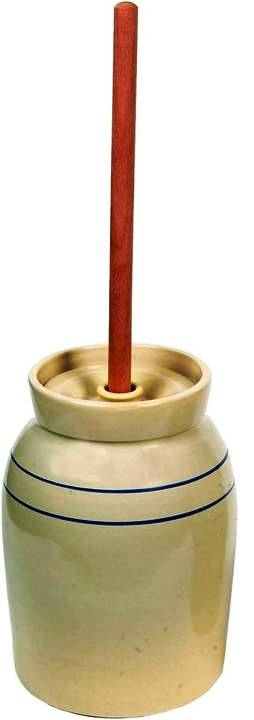
Butter is much more of a necessity than most people realize. While we might think we can get by without it, it’s all but impossible to bake without butter. When the stores don’t have any butter, you’re going to need a butter churn of one style or another, to make your own. There are actually quite a number of different types of butter churns, including my personal favorite, one that’s built into a large glass jar.
Butter Molds

It might not be absolutely necessary, but our ancestors used to press their fresh butter into molds, making the butter into a variety of different shapes, not just sticks. Farm animals were popular shapes for making butter, which would fancy up any table. The leftovers could then be used in the kitchen.
Dutch Oven
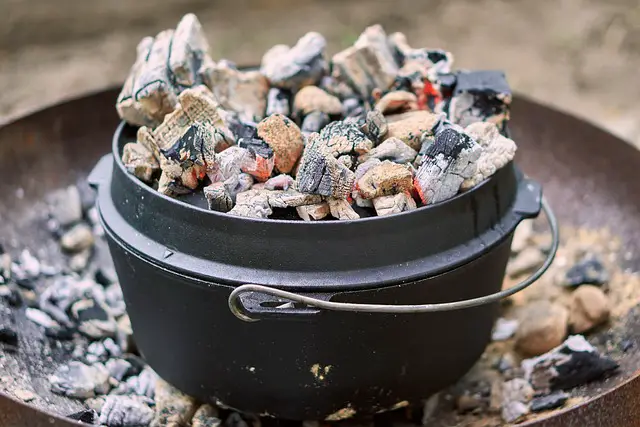
Most of what are sold as Dutch ovens today really aren’t Dutch ovens; they’re small stockpots. A true Dutch oven is a cast iron pot with short legs cast into it. These legs help make it possible to set the oven down into the coals of a fire, while still keeping it level. The lid looks inverted, because there’s a lip around the edge, so that coals can be piled on top of it and not fall off.
Such an arrangement makes it possible for there to be heat both above and below the food being baked inside, something that defines what an oven is. Without a Dutch oven, it will be difficult to bake bread, cakes or pies in a fireplace or wood-burning stove.
French Press

The French Press has actually made a comeback amongst true coffee afficionados. It’s a simple way of preparing coffee, which will extract just about the maximum possible amount of flavor from the beans. A rather simple affair, it has a built-in stainless-steel filter, so no filter papers are needed.
Coffee Mill
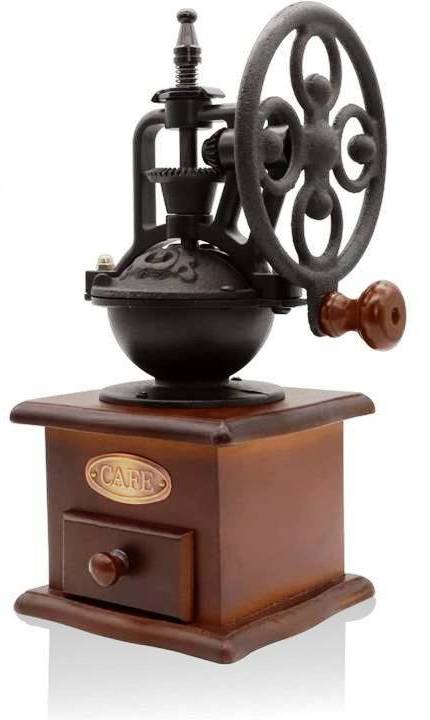
Like the French Press, the coffee mill has made a comeback amongst those who are picky about their coffee. The big advantage to us, in a survival scenario, is that whole coffee beans remain much fresher than ground coffee.
But what most of those people use are electric coffee mills, which aren’t going to work out too well, when there’s no electricity. A hand-crank coffee mill will be required, just like great-granny used.
Old-style Canning Jar Rubbers

We preppers have adopted the idea of canning and practice it as a means of preserving food. That’s good, as it helps us to make the most of our gardens, and will continue to do so, until we run out of lids. Then what do we do? The canning jar lids we use really aren’t reusable, as they have the rubber molded into them and once that rubber forms around the lip of a jar, it’s pretty much useless if we try to use it again.
Before “modern” canning lids, people canned with rubber rings and lids that didn’t have the rubber molded into them. This combination is more or less infinitely reusable, as long as neither the lids or the rubber rings get damaged.
Food Mill
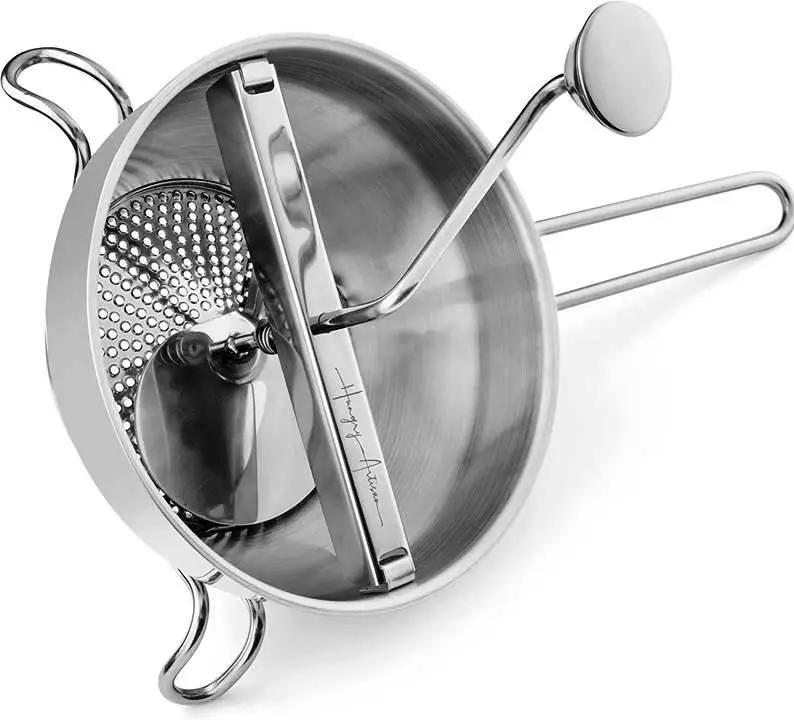
Food mills are used to press the pulp out of foods like tomatoes or applesauce. There are two basic styles of these tools: one that is shaped like a deep cone, with the food being pressed through a cone shaped wooden “plunger.”
The other looks more like a wide flour sifter, with the press part shaped like the propellor blades on DaVinci’s helicopter. Both accomplish the same task, although the cone shaped ones are designed for a larger volume of work.
Meat Grinder & Sausage Stuffer
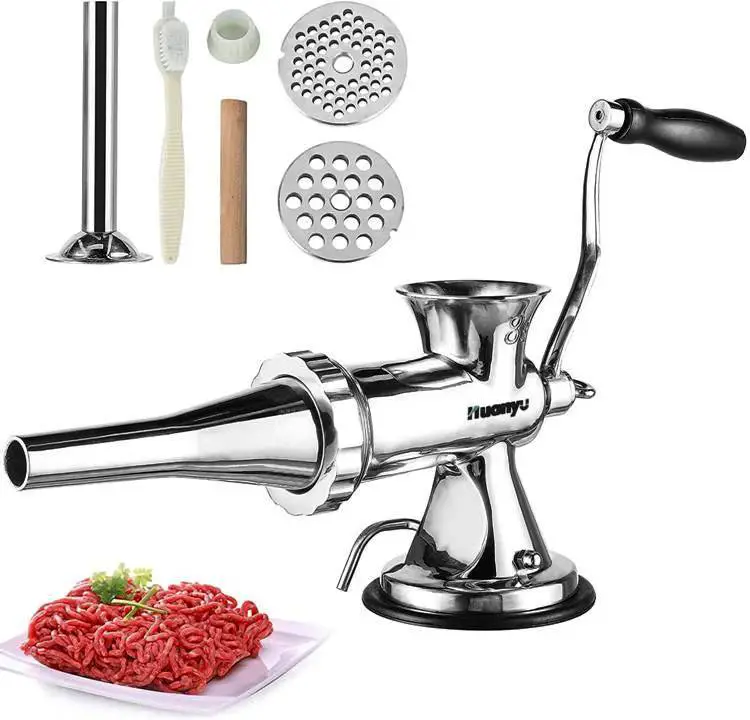
We take ground beef and sausage for granted these days, as they are readily available. But have you ever thought of where the idea of those meat products came from? It was a way of using less-edible parts of an animal, usually less edible because they were tougher meat.
Grinding them up and mixing them with fat turned them from something that was hard to chew, into something enjoyable. For that matter, the same process was used for making most of the lunchmeats we know.
While you can still find meat grinders today, it takes a bit of looking. Almost all of them will come with a sausage stuffer attachment, allowing you to make sausage links. Typically, the sausage stuffers allow for different sizes, making it so that the same stuffer could be used to make breakfast sausage, bratwurst and salami. Just be sure to stock a good suppl of sausage casing, so that you don’t have to get it the hard way.
Grain Mill
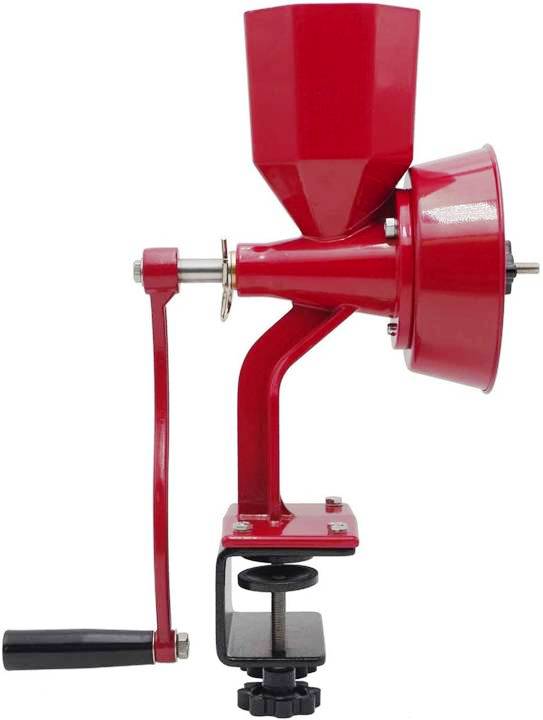
This one should come as no surprise to any prepper, as we’ve all talked about storing whole grains and needing to grind them. Don’t skimp on buying a grain mill, if you want to be able to grind flour fine enough to bake cookies and cakes. Expect to pay a pretty penny for a good one. Avoid electric ones, as they won’t do a bit of good without electricity.
Flour Sifter
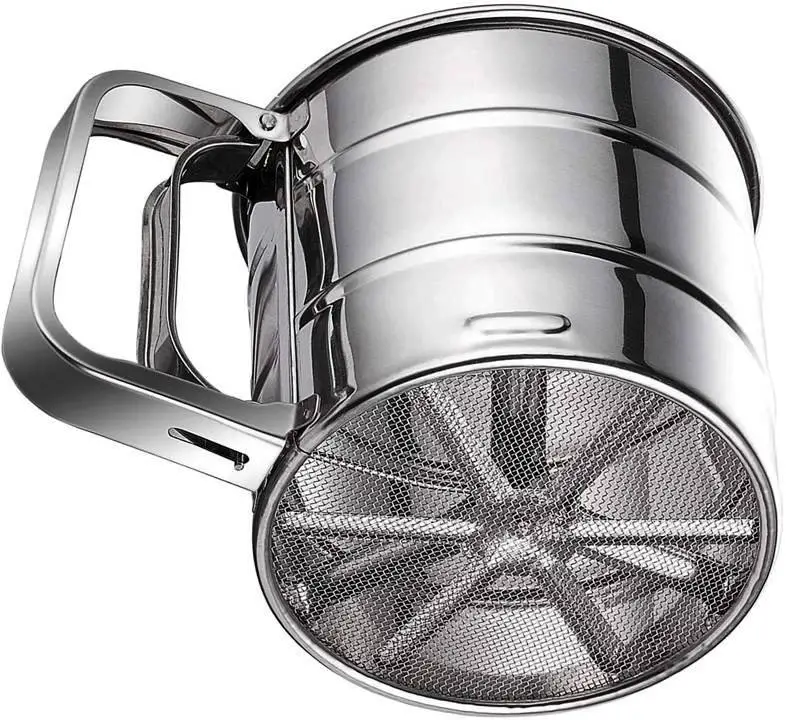
Today, we buy flour that’s already sifted; but if you’re going to be grinding your own, you’re probably going to want to sift it yourself. That’s not all a flour sifter is good for though; bins of ground flour are a haven for insects.
Sifting the flour before using it is a great way of making sure you don’t bake a bug into your bread. You may think I’m kidding; but there are places in the world today where this is a necessity.
Oil Press
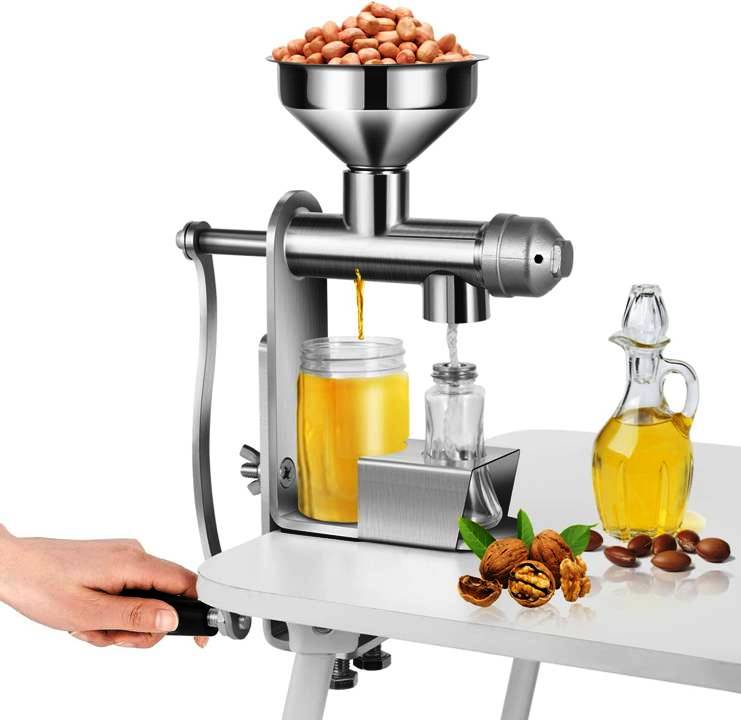
Cooking oil doesn’t grow on trees; although it does grow in olives, corn and a variety of other foods. The problem is getting the oil out, leaving the solid part of the food behind. That’s where an oil press comes in. It looks much like a grain mill, but allows you to extract the oil from nuts and seeds, so that you can use it for cooking. The same press can also be used to make nut butters.
Cider Press

Speaking of presses, if you have apple trees, you might want a cider press as well, which will allow you to extract the juice from apples and make cider. Once the cider is extracted, it can be allowed to ferment if you want hard cider. But you’d better have access to a lot of apples, in order to make it worthwhile spending the money on this tool.
Noodle Cutter
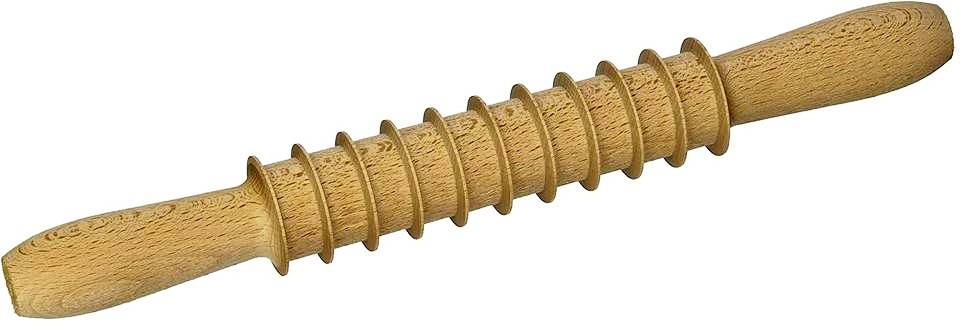
Spaghetti, in all its various sizes and types, is made by first mixing and kneading the dough, then rolling it out for cutting. I’ll warn you though; noodle dough is much stiffer than bread dough, so it will give you a great upper-body workout, if you decide to make your own noodles.
Most noodles today, even for people who make their own, are cut with a hand-crank or electric noodle maker that flattens the dough, making it thin enough for the noodles and then cuts them into strips, making the individual noodles.
In olden times, this wasn’t done by a machine; but rather with a simple tool that looked a lot like a rolling pin with ribs. The ribs were sharp enough to cut the dough, which had been rolled out with a normal rolling pin.
Pasta Drying Rack
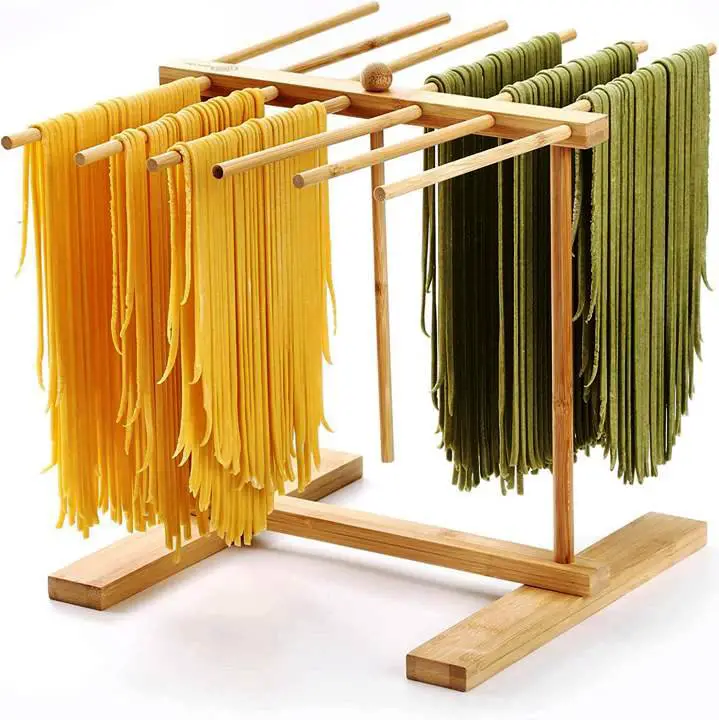
If you’re going to make your own spaghetti and want to save it for later, you’re going to need to dry it out. This is typically done on a wooden rack, which looks a lot like a clothes drying rack sitting on the kitchen counter or table.
Nut Cracker

You’ve probably heard of a nut cracker; but the question is… do you have one? if you’re growing any sort of nut trees on your property; you had better be ready for some mass cracking. I have three pecan trees on my property and I leaned quickly the value of a good nut cracker. While I was able to crack them just fine with a pair of channel locks, that wasn’t the ideal tool for the job.
Cherry Pitter

There are a lot of specialty tools in the kitchen, which are only used for one or two types of foods. Such is the cherry pitter, which exists for the sole purpose of pitting cherries, so that they can be used in baking. While you can do this with a knife, all it takes is pitting enough cherries for one pie to sell you on the value of this simple tool.
Apple Peeler-Corer
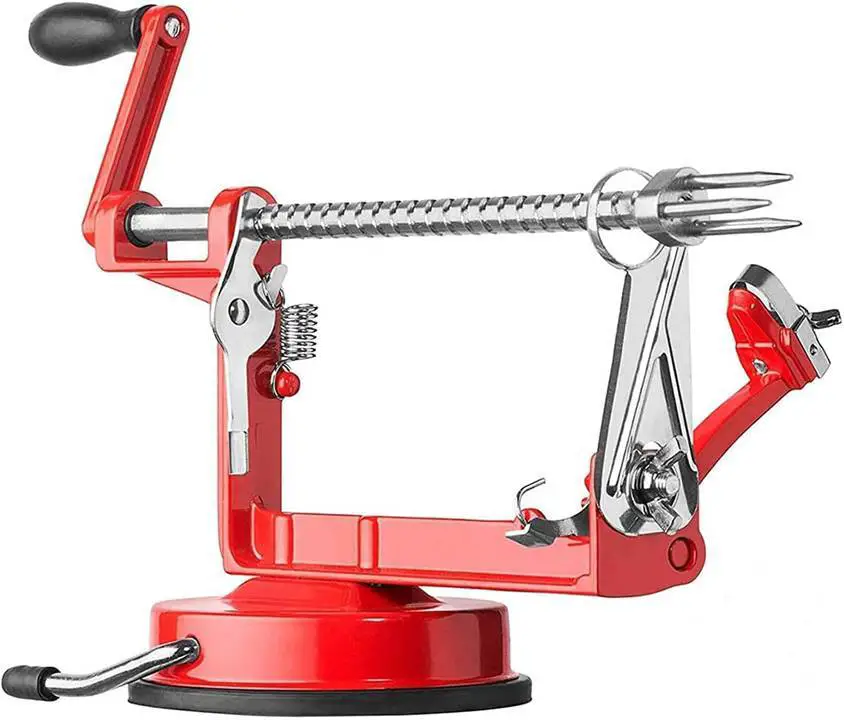
Speaking of specialty tools, the apple peeler-corer is another essential, assuming that you have apple trees. Apples are used in many different things, most especially applesauce, apple pies and apple butter. All three of these require the apples to be peeled and cored. While that can be done with a knife, don’t you have better things to do with your time?
I cheat for peeling my apples; but that cheat probably won’t do me any good in a post-disaster world. What I do is that I take a spade bit, clean it thoroughly and then chuck it up in my cordless drill. Running the drill slow, I hold a palm-type potato peeler up to the apple, peeling it in about five seconds.
Eggbeater

I’m pretty sure that you can find these today; but don’t forget to get yourself a good hand-crank eggbeater. Spend a few extra bucks for a quality one, as the cheap ones tend to fall apart after a while. Good ones will be made with stronger, thicker materials, which won’t flex under the pressure of use.
Potato Masher
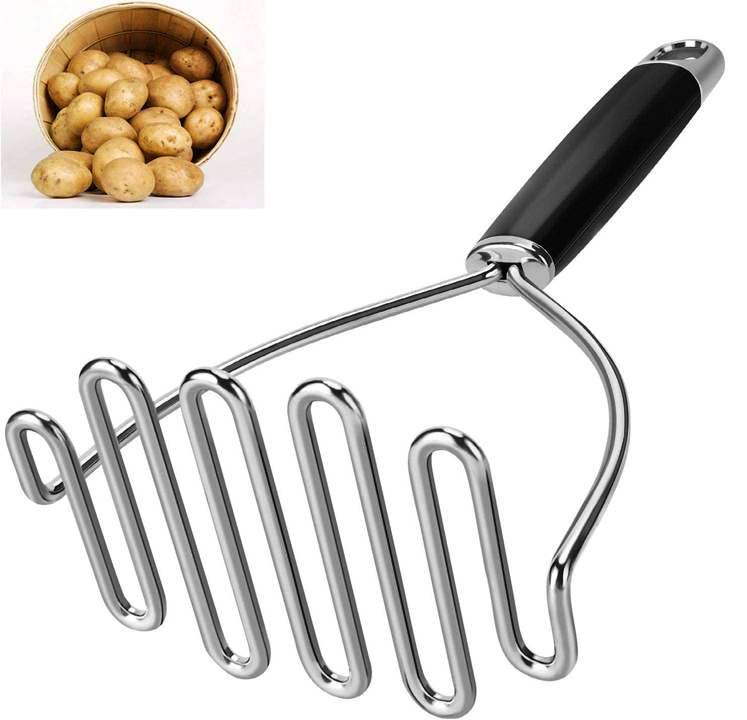
Who doesn’t like mashed potatoes? We all grow potatoes in our gardens, as it is one of the easier things to grow, providing abundant calories and carbohydrates.
As a survival food, potatoes are great. But once the power is gone for your electric mixer, you’re going to need a potato masher, if you want to eat mashed potatoes that is. By the way, those mashed potatoes can also be used for making potato pancakes.
Meat Hammer
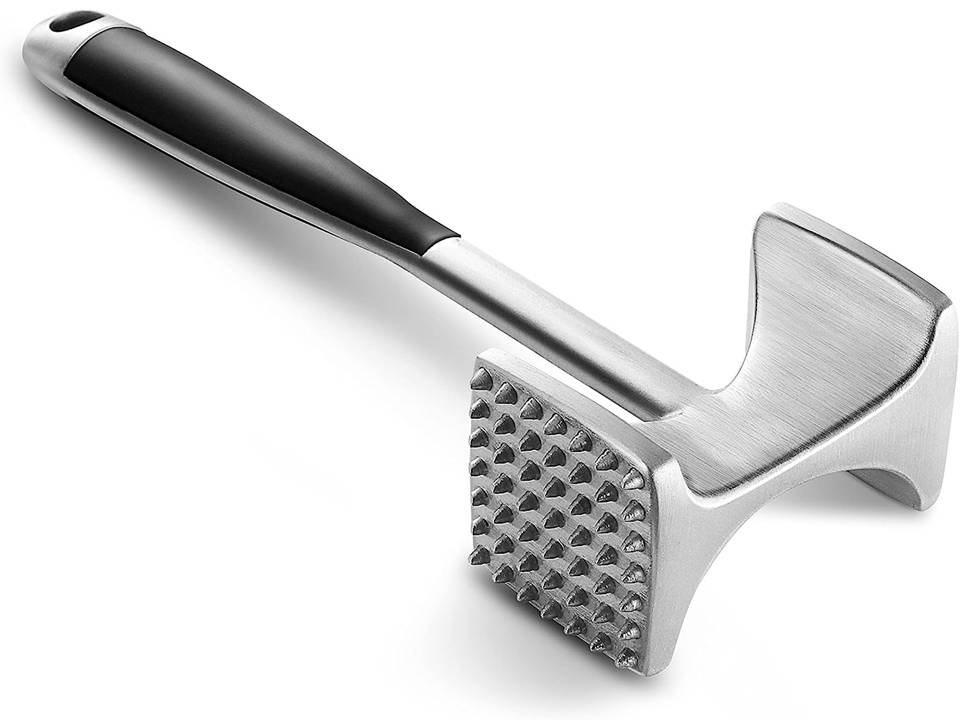
Okay, maybe you have one and maybe you don’t. But as one who has eaten my fair share of game meat, if you’re planning on eating game meat, from squirrel up to moose, you’d better have a meat hammer to tenderize it. Game meat tends to be much tougher than the steaks and pork chops we buy in the store.
Whisk

Chances are you’ve got a whisk in your kitchen; but if you don’t, you should. These are the ideal tool for mixing up eggs to make scrambled eggs, mixing pancake batter and making gravy. The multiple wires provide multiple mixing surfaces, which cut through whatever you’re trying to mix.
At the same time, the whisk can be use to beat air into whatever you’re mixing. That’s great when you’re cooking scrambled eggs at high altitude; but it can also be used to make homemade whipped cream in a matter of minutes.
Dough Whisk (sometimes called a Danish Whisk)
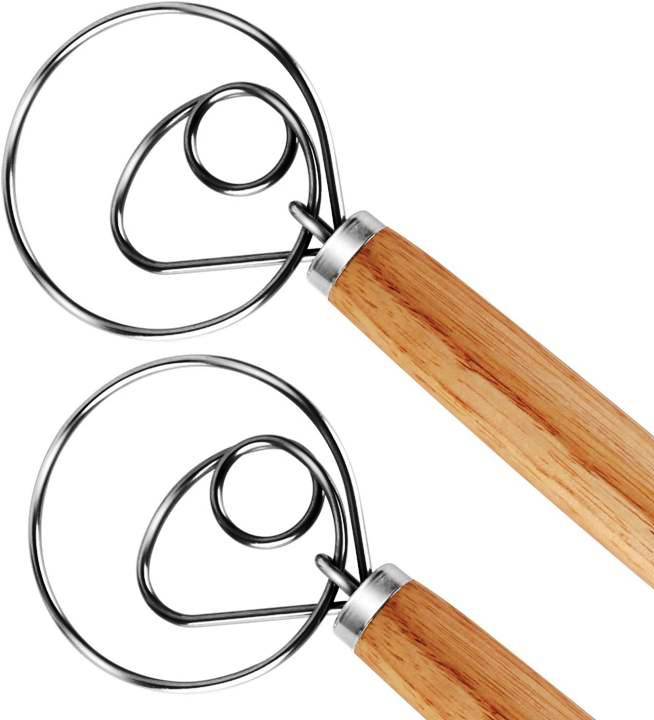
The Danish dough whisk is a much better tool for mixing up doughs and batters than a wooden spoon. It’s best used at times when what you’re mixing is too thick to use a whisk on it.
Pot Strainer

These are actually in use today, although not all that many people use them. it’s kind of like a colander that you put over the edge of a pot. That allows you to drain water from vegetables or noodles, without spilling them all out of the pot. Ideal when you’re only cooking a small amount and smaller than that colander, so it’s not as much to wash.
Manual Well Pump

If you want the ultimate kitchen from the 1800s, make sure you install a manual well pump at the sink, so that you don’t have to go outdoors and haul water into the house. This is a great convenience, saving time and work. But of course, you’re going to have to have a well or cistern right underneath it. for it to do any good.
Like this post? Don't Forget to Pin It On Pinterest!





